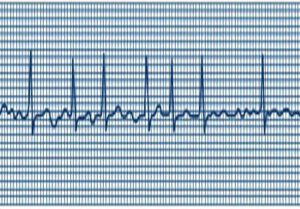
Atrial fibrillation (AF) is a common heart rhythm disorder that, while not usually life-threatening on its own, can lead to more serious complications such as heart attack and stroke.
AF can be caused by underlying heart problems but high blood pressure, being overweight, and having type 2 diabetes also increases the risk of developing the condition. It would make sense, then, if populations with higher rates of these risk factors exhibited higher rates of AF. This, however, doesn’t seem to be the case: atrial fibrillation is more common in people of European descent than in African Americans despite the fact that African Americans as a whole tend to have higher rates of hypertension, obesity, and type 2 diabetes.
A research team led by Gregory Marcus of the University of California – San Francisco and Susan Heckbert of the University of Washington in Seattle investigated whether this seeming contradiction might be due to genetic factors.
Looking at Differences in Ancestry and Differences in Risk
Theorizing that European ancestry predisposes people to AF, these investigators looked for correlations between the amount of European ancestry and risk for developing the disease in more than 4,000 African Americans and 15,000 people of European descent.
Their results, published recently in the journal Circulation, show compelling evidence that African Americans with higher amounts of European ancestry are at higher risk for AF. In fact, simply being African American provided a 30% reduction in risk for AF over individuals who derived their ancestry solely from Europe.
When Marcus and his team looked closer, they found that as the amount of European ancestry increased, so did the risk for atrial fibrillation. While the researchers note that this intriguing pattern may be due to non-genetic factors that correlate with amount of European ancestry, they suggest that ancestry itself — and, thus, genetics — is the mediating factor.
Mixed Ancestry
More broadly, their findings highlight some of the challenges of researching diseases in populations with mixed ancestry.
Does the proportion of ancestry from different parts of the world impact the results? How do we interpret findings discovered in such populations, and what do findings made separately in European and African populations mean for individuals who derive their ancestry from both places?
These are still open questions, and ones that 23andMe hopes to help answer through the Roots into the Future research initiative.
Related blog posts:
Roots into the Future: A New Research Initiative for African Americans
Ethnicity Matters in Research: A Case Study in Prostate Cancer
Our Hidden African Ancestry



